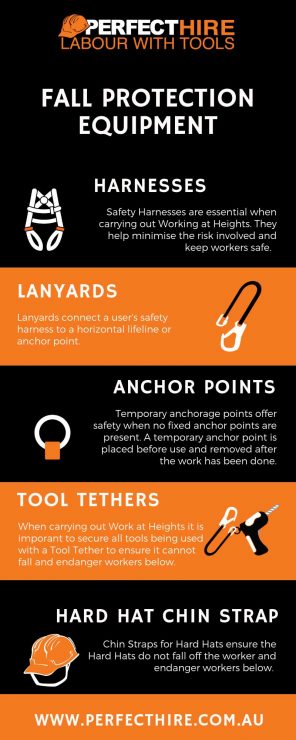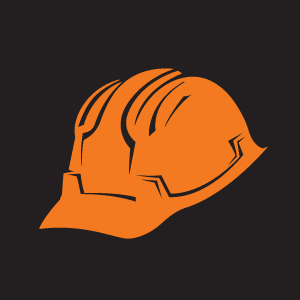Safety while working at heights
- magda

Working at Heights is still one of the most dangerous tasks in construction. Failing from heights was the cause of 11% of all work-related deaths in Australia. That’s 359 workers were killed falling from a height. According to SafeWork, over 37% of these fatalities were from the Construction Industry. That is why at Perfect Hire we take working at heights very seriously. We also take all necessary measures to ensure all our team members can carry out their duties in a safe working environment.
Managing risks
Perfect takes all the necessary measures to ensure we comply with WHS Regulations to manage the risk, as far as reasonably practicable. This includes requirements to:
- Ensure any work involving the risk of a fall is carried out on the ground or on a solid construction.
- Provide safe means to access and exit the workplace.
- Minimise the risk of falls by providing a fall prevention device, and working positioning system of a fall arrest system.
Ways to minimise the risk of falls
The most effective way to protect our team members is to eliminate the need to work at heights in the first place. Other preventive measures include installing a fall prevention device.
This includes any equipment that is specifically designed to prevent a fall when our team members are temporarily working at heights, which once installed doesn’t need any further adjustment by our team members using it, for example, guard rails or safety barriers.
Personal Protective Equipment
When carrying out Work at Heights it is always important to have all the essential fall protection personal protective equipment such as:

Harnesses
Safety Harnesses are an essential piece of equipment when carrying out high-risk Work at Heights. It is a preventative measure taken to ensure the safety of the worker carrying out the work.
Lanyards
Lanyards connect the user’s Safety Harness to the horizontal lifeline or anchor point. It is important to ensure you are using the correctly rated Lanyard. Also, it is important to make sure that it has been recently tested before using the Lanyard.
Anchor Points
Anchor Points are a temporary fixture installed before working at heights is carried out. Before attaching to the anchor make sure the Anchor Point has a test tag on it. This means the anchor has been tested by a certified engineer and is safe for use. Do not attach to an anchor point that is not tagged as this anchor point has not been tested and may fail.
Tool Tethers
When working at heights it is important to ensure your tools are secure and to take extra measures to ensure they do not fall and endanger workers below. This can be achieved using Tool tethers that attach the tool and can be fixed to your body or a scaffold depending on the rating of the tether.
Hard Hat Chin Strap
When working at heights it is also important to ensure your hard hat is securely on your head. It cannot fall and pose a significant risk to workers below. Hard Hat Chin Straps can be purchased at most hard wear or safety equipment stores.
When is fall protection not needed?
The only time falls protection or falls personal protective equipment is not necessary when carrying out work at heights is if there is a certified Guard Rail installed providing edge protection for the entire working area.
These can come in two types of Guard Rails in the Construction Industry that are certified for use in New South Wales:
Temporary Clamp On Edge Protection System
This provides valuable fall protection in those places where traditional systems fail to attach. The ease of application allows for installations free from damage to the host materials and with the confidence of a strong handrail. The Clamp-On System is used on the top of concrete parapet walls or the edge of the cantilever slab floors. It is adjustable from 100mm up to 300mm to suit the thickness of the walls or slabs.
Fixed Edge Protection Systems
These are more fixed edge protection system that is more suited for long-term projects that require continuous edge protection. Coupled with void protection this system offers maximum edge protection throughout a project.
Perfect is a safety-first company
This means we take all necessary measures to ensure the safety of our team members when carrying out work at heights. We put all our team members through Working at heights training with Registered RTOs. It is to ensure they know about the risks and dangers involved. We also invest in the best quality fall protection equipment on the market and regularly purchase:
- Harnesses
- Lanyards
- Tool Tethers
- Hard Hat Chin Straps
Before our team members attend a Working at heights project for our clients we ensure they have the appropriate Safe Work Method Statements and that they have been through our client’s Site Specific Safety Induction. As well to these measures, our QSE Manager also carries out regular Site Safety Inspections on our client’s sites and raises any safety concerns with their Safety Officer.











